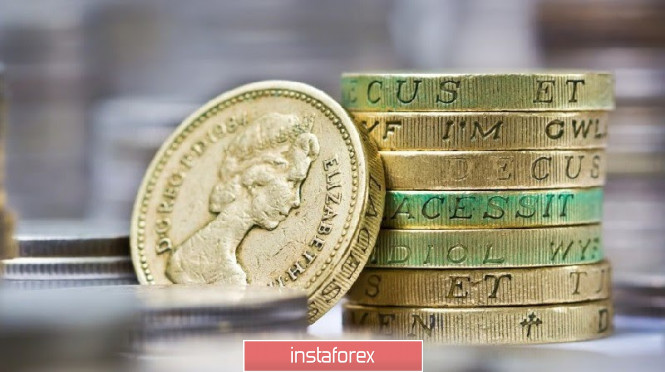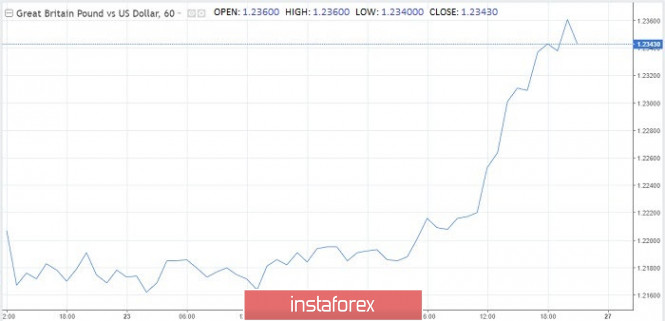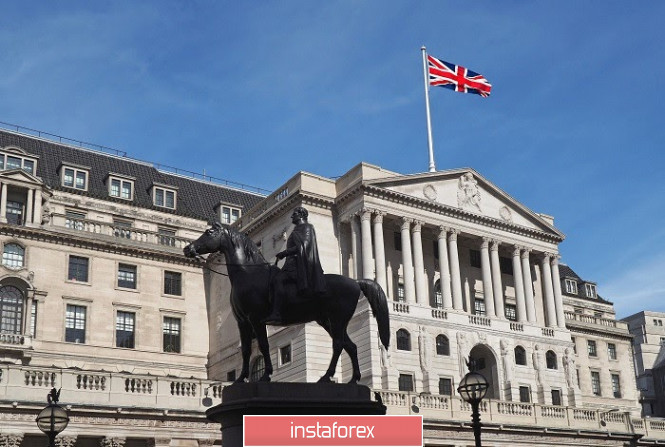
The pound significantly strengthened against the dollar and the euro on Tuesday. The British currency has gone above $1.23 for the first time in 13 days, which is primarily due to the general decline in the US dollar, which suffered from a risk appetite.
Reuters added positive news to the sterling as it reported that the European Union was ready to change its position on fisheries in negotiations on the UK's future relations with the bloc.
GBP/USD

As for speculation about the possible introduction of negative interest rates in Britain, which Bank of England Governor Andrew Bailey implanted last week, here everything is as clear as it might seem at first glance. On Tuesday, BoE Chief Economist Andy Haldane made it clear that the regulator didn't even come close to deciding to switch to negative rates. While everything is at the level of conversation. The central bank will have to assess what the consequences of negative rates will be for British banks and lenders who will experience pressure on margins. It is also important how such a step will affect confidence in the economy. In addition, a number of recent economic data turned out to be slightly better than the economic development scenario provided for by the regulator.
The pound was relieved, but the euphoria was unlikely to last long. Tomorrow will be a new day, although the sterling has already begun to lose the benefits it earned during the day against the dollar in the evening. Ahead of the sterling is a turbulent June, which may be the most volatile of all time after voting for Brexit.
What does the pound prepare for June?
The pound may finish the fall for the fourth straight month. Sterling lost 1.5% against the dollar in May. Meanwhile, the growing list of risks suggests that a lull typical of June should not be expected. In the first summer month, the pound traders seem to face increased uncertainty in several directions at once. This is the end of the Brexit transition period extension, the possible introduction of negative rates in the country and the expected exit of the economy from quarantine. Uncertainty is known to increase volatility.
Britain and the EU do not have much time to conclude a new trade deal. What the parties have today, namely nothing, will not allow them even to come close to concluding a deal. The only way out is to once again extend the transition period. Here, too, the deadlines are tightened, the decision must be announced before June 30. Negotiations on this issue will resume on June 1.
Unwillingness to extend the transition period will cause the pound to be volatile, however, as well as the prospect of any extension of Britain's exit from the EU. At the same time, we will no longer see the highest observed during the peak of panic around the pandemic in March.

Pound fluctuations may increase as the BoE meeting approaches on June 18. Financial markets were quick to put in quotes the prospect of introducing negative interest rates by the end of the year. Bailey's recent comments on this have led UK bond yields to a record low, below 0%.
There is an opinion in the market that negative rates will not help the economy; a more powerful set of measures is needed. Therefore, the central bank may increase the purchase of assets in addition to state budget incentives. If Britain nevertheless becomes the next largest country with negative rates, the pound may face pressure from options, where a change in risk suggests that the mood of traders is less bearish compared to the spot market. Risk reversal, a barometer of market positioning, indicates that the overall risks of a decline in the British currency still prevail.
Published macroeconomic reports show the depth of damage caused by COVID-19. Investors will closely monitor the UK exit from quarantine, as well as the impact of easing restrictions on the rate of spread of coronavirus in the country. This topic will also not leave the pound indifferent, but Brexit news will nevertheless come to the fore.
The material has been provided by InstaForex Company - www.instaforex.com